Today was a good day for the harpoon. About 7 of us showed up to work on the old gal and good progress was made by all.
Scott and his brother tackled the leading edges on the right wing while Ken and his Cousin Mike worked on the left side
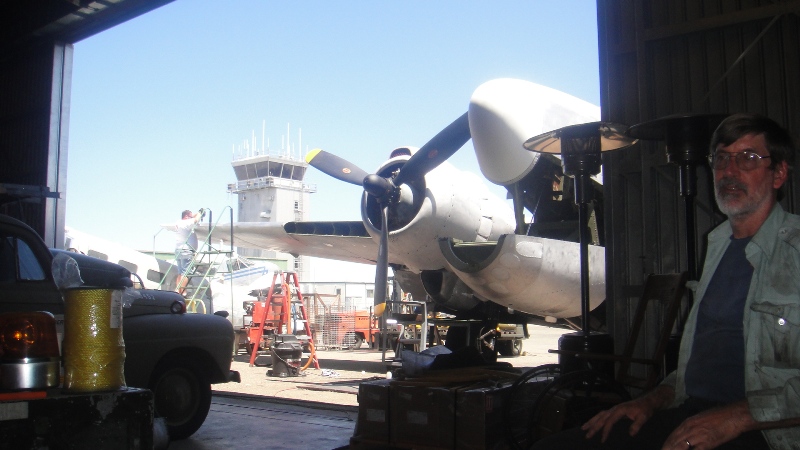
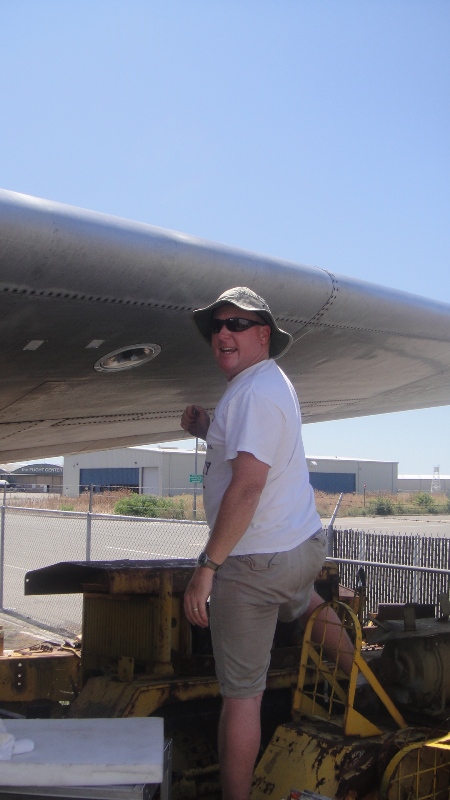
One nice thing about the PV-2 was its hot leading edge de-ice system. It was innovative for WWII and is still in use today. I wonder if the Harpoon may have been one of the very first aircraft to use heat instead of pneumatic boots.
The engine exhaust system had a heat exchanger which allowed hot air to be fed through ducting in the leading edges of the wing and horizontal stabilizer. This hot air was used to melt ice or keep it from forming in the first place.
Our PV-2D was made for the South Pacific and the invasion of Japan and as a result this system was not installed at the factory. even though the ducting in the wings was not in place a nice feature of this system still remains. The leading edges are attached with 10-32 screws (a lot of them!) and can be removed. This gives great access to the forward part of the wing which is not all that common on aircraft of the day.
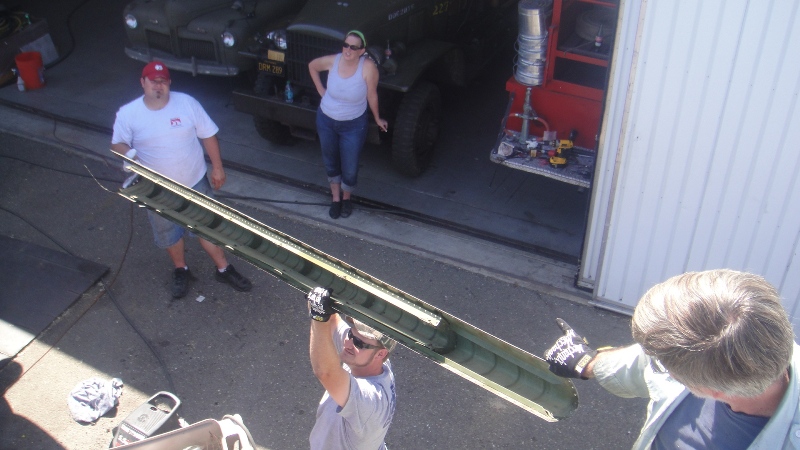
Here is Ken checking out the internal structure.
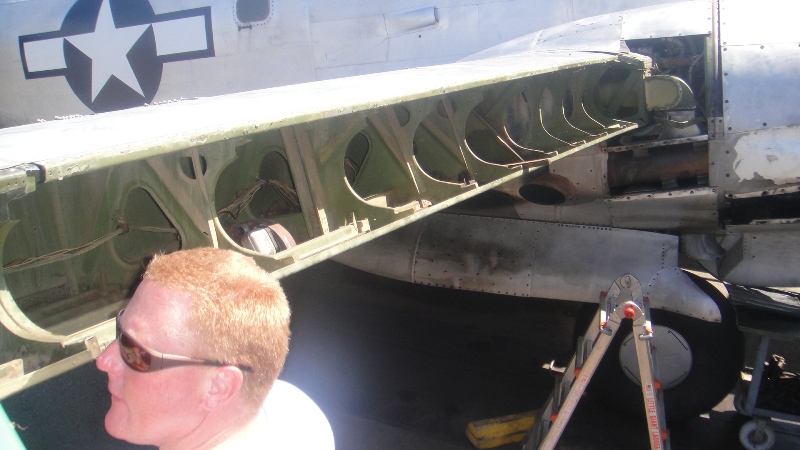
The aux oil tank is installed just outboard of the engine. This tank held an additional 20 gallons of engine oil for long range patrol work. Early tanks were aluminum but later aircraft had rubber self sealing tanks. The dust on the oil tank looks to me to be Arizona dust as I have seen this on several Beech's I have had that came from Davis Monthan. I wonder if it is as she sad in storage for 12 years at Litchfield Park. Who knows but we will certainly remove the dust soon enough.
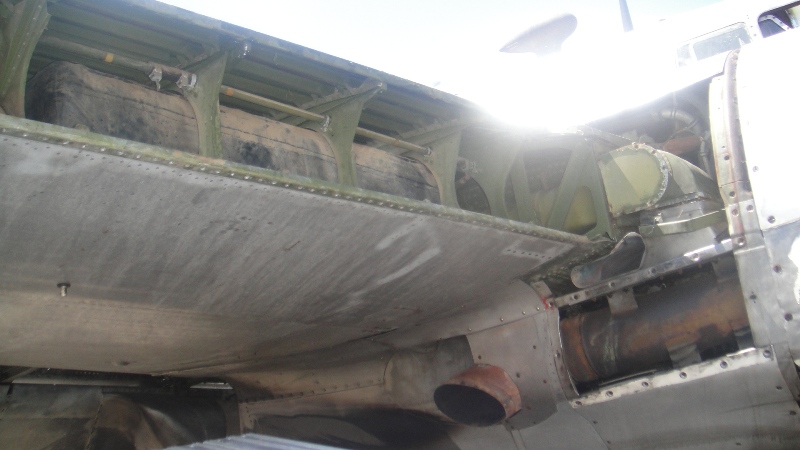
The leading edges are built in two parts inboard and outboard. This is the junction of the two.

Kelley started cleaning out the wings and removing what the ground squirrels had left behind. After vacuuming and blowing out the wings they will be washed and treated with corrosion protection. There are no real corrosion problems throughout the airframe which still amazes me. Most all of the surviving harpoons have had big issues with corrosion but we have been very fortunate by finding only minor surface corrosion in a very few places.
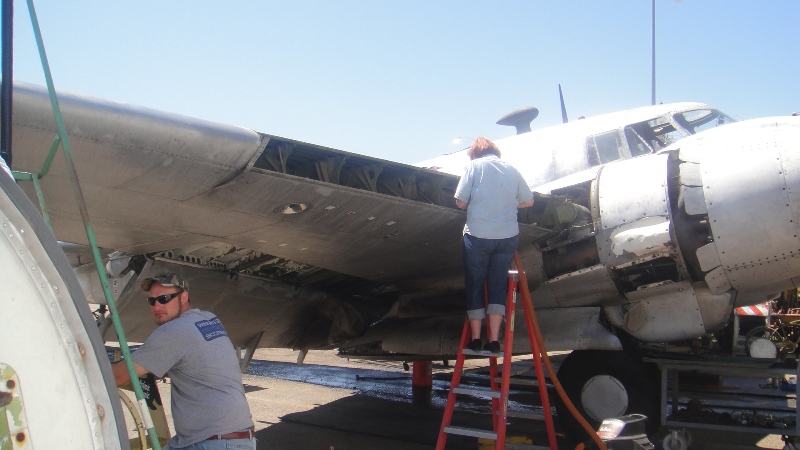
Ricky started to do the brake adjustment by pulling the left wheel to gain access to the brake pack. The brakes on the Harpoon are the multi disc type which are used on many WWII aircraft. This system consists of stators and rotors which are set up with .077 clearance without pressure applied. After some initial use and periodically thereafter the brakes need to be adjusted as the clearance increases with wear. I noticed that the brakes were starting to grab which is an indication that they are in need of adjustment.
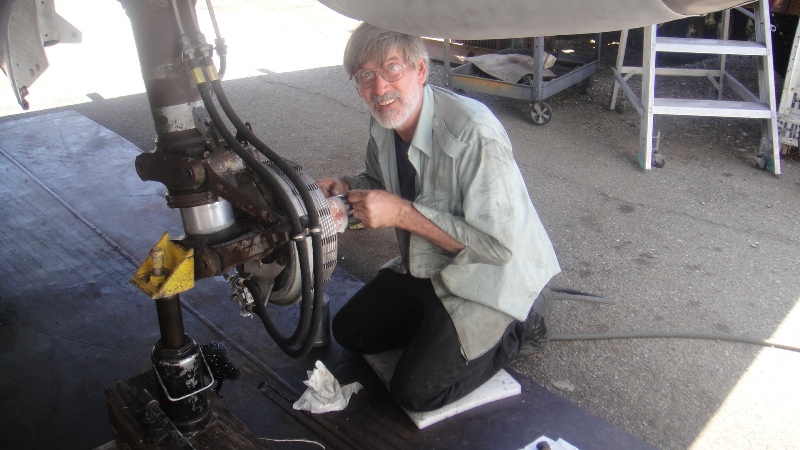
The brakes looked pretty good after the work they have had since they were installed back in the dust bowl.
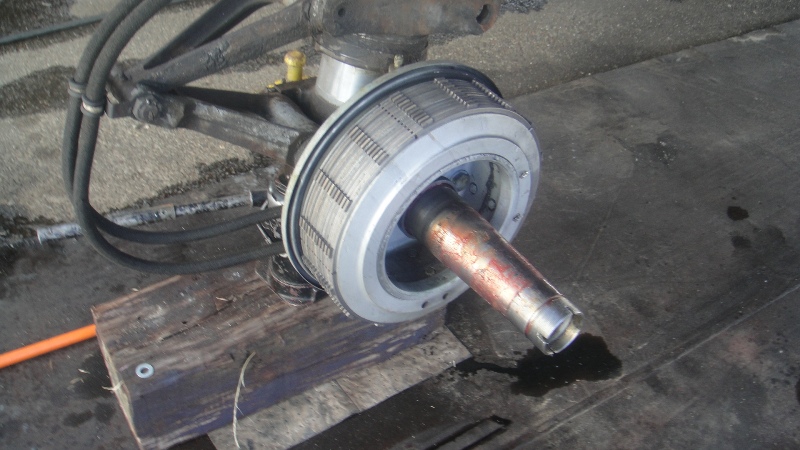
Ricky adjusted the brakes, re packed the wheel bearings and installed the wheel. The left side is now all better. Incidentally while we were eating pizza for lunch Ricky put the wheel back on without help which is no easy task since the wheel weighs about 200+ pounds. Next time ask for help!!
I think I am going to head back out there tomorrow to do some more cleaning in the wings and screw extraction. Its good therapy

_________________
To donate to the PV-2D project via PayPal click here
http://www.twinbeech.com/84062restoration.htmWe brought her from:

to this in 3 months:

Help us get her all the way back

All donations are tax deductible as the Stockton Field Aviation Museum is a 501c3 nonprofit organization. Tell a friend as the Harpoon needs all the help she can get.
Thank you!
Taigh Ramey
Vintage Aircraft, Stockton, California
http://www.twinbeech.com'KEEP ‘EM FLYING…FOR HISTORY!'




